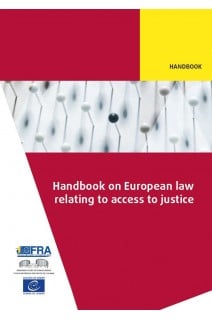



Access to justice is recognized as a fundamental right; but how is it guaranteed?
Access to justice is an important element of the rule of law. It enables individuals to protect themselves against infringements of their rights, to remedy civil wrongs, to hold executive power accountable and to defend themselves in criminal proceedings. This handbook summarises the key European legal principles in the area of access to justice, focusing on civil and criminal law. It seeks to raise awareness of the relevant legal standards set by the European Union (EU) and the Council of Europe, particularly through the case law of the Court of Justice of the European Union and the European Court of Human Rights. The handbook is designed to serve as a practical guide for lawyers, judges and other legal practitioners involved in litigation in the EU and in Council of Europe member states, as well as for individuals who work for non-governmental organisations and other entities that deal with the administration of justice.
To order the handbook (paper version) or any other FRA publication, write to: i[email protected]
Contents
FOREWORD
PROMISING PRACTICES
ABBREVIATIONS AND ACRONYMS
HOW TO USE THIS HANDBOOK
1 WHAT DOES ACCESS TO JUSTICE MEAN?
Key points
2 A FAIR AND PUBLIC HEARING BEFORE AN INDEPENDENT AND IMPARTIAL TRIBUNAL AND OTHER BODIES
2.1. Accessing justice through courts
Key points
2.1.1. Right of access to a court
2.1.2. Definition of ‘tribunal’
2.2. Independence and impartiality of tribunals
Key points
2.3. What is a fair and public hearing?
Key points
2.3.1. A fair hearing
2.3.2. A public hearing
2.4. Other paths to justice
Key points
2.4.1. Non-judicial bodies
2.4.2. Alternative dispute resolution
3 LEGAL AID
3.1. Legal aid in non-criminal proceedings
Key points
3.1.1. Scope of application
3.1.2. Financial and merit tests
3.2. Legal aid in criminal proceedings
Key points
3.2.1. Scope of application
3.2.2. Financial means test
3.2.3. Interests of justice test
4 RIGHT TO BE ADVISED, DEFENDED AND REPRESENTED
4.1. Right to be advised, defended and represented in noncriminal proceedings
Key points
4.1.1. Scope of application
4.1.2. Practical and effective legal assistance
4.2. Right to be advised, defended and represented in criminal proceedings
Key points
4.2.1. Scope of application
4.2.2. Quality of legal assistance
4.2.3. Legal assistance of one’s own choosing
4.2.4. Adequate time and facilities to prepare one’s defence
4.2.5. Waiver
4.3. Right to self-representation
Key points
5 RIGHT TO AN EFFECTIVE REMEDY
5.1. What is an effective remedy?
Key points
5.1.1. Substantive and procedural requirements of an effective remedy
5.1.2. Institutional requirements of an effective remedy
5.2. Examples of specific remedies
Key points
5.2.1. Compensation
5.2.2. Specific performance
5.2.3. Injunctions
6 LIMITATIONS ON ACCESS TO JUSTICE IN GENERAL
6.1. Legitimate aim and proportionality
Key points
6.2. Examples of restrictions before a final judgment or decision
Key points
6.2.1. Court fees
6.2.2. Excessive formalism
6.2.3. Evidence barriers
6.3. Delay in the execution of final judgments
Key points
7 LIMITATIONS ON ACCESS TO JUSTICE: LENGTH OF PROCEEDINGS
7.1. Determining the length of proceedings
Key points
7.1.1. Determining the length of non-criminal proceedings
7.1.2. Determining the length of criminal proceedings
7.2. Criteria determining the reasonableness of the length of proceedings
Key points
7.2.1. Complexity of the case
7.2.2. Conduct of the complainant
7.2.3. Conduct of the domestic authorities
7.2.4. What is at stake for the complainant
7.3. Remedies for excessively lengthy proceedings
8 ACCESS TO JUSTICE IN SELECT FOCUS AREAS
8.1. Persons with disabilities
Key points
8.1.1. Access to justice
8.1.2. Capacity
8.2. Victims of crime
Key points
8.3. Prisoners and pre-trial detainees
Key points
8.3.1. Access to a court and a lawyer
8.3.2. Right to challenge a deprivation of liberty
8.3.3. Compensation for unlawful detention
8.4. Environmental law
Key points
8.5. E-justice
Key points
FURTHER READING
CASE LAW
INDEX

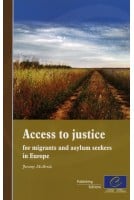
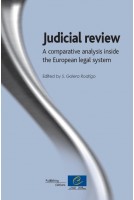
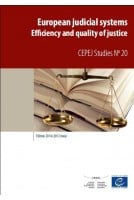
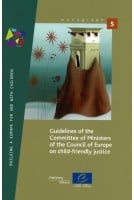

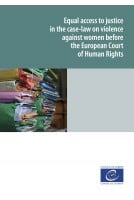
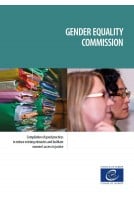




Access to justice is recognized as a fundamental right; but how is it guaranteed?
Access to justice is an important element of the rule of law. It enables individuals to protect themselves against infringements of their rights, to remedy civil wrongs, to hold executive power accountable and to defend themselves in criminal proceedings. This handbook summarises the key European legal principles in the area of access to justice, focusing on civil and criminal law. It seeks to raise awareness of the relevant legal standards set by the European Union (EU) and the Council of Europe, particularly through the case law of the Court of Justice of the European Union and the European Court of Human Rights. The handbook is designed to serve as a practical guide for lawyers, judges and other legal practitioners involved in litigation in the EU and in Council of Europe member states, as well as for individuals who work for non-governmental organisations and other entities that deal with the administration of justice.
To order the handbook (paper version) or any other FRA publication, write to: i[email protected]
Please note that in accordance with our terms & conditions, PDF/epubs may only be purchased by private individuals.
